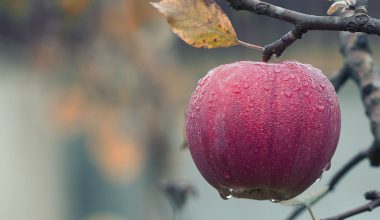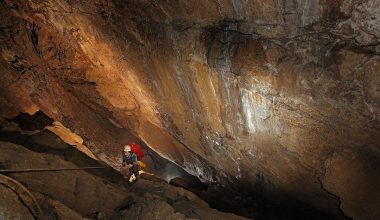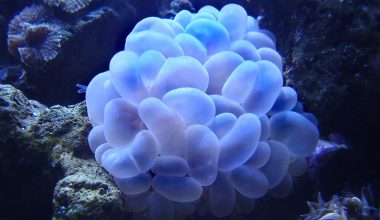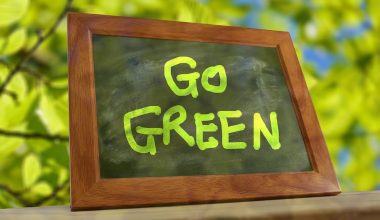The ocean is home to a wealth of unexplored land as well as breathtaking natural features that appear to be from another planet. The color and unique characteristics of underwater plants and animals, such as tentacles, bioluminescence, skin that resembles jelly, and decorative shells, are in abundance. Here is the list of spectacular underwater plants and sea creatures,
Underwater Plants
1. Kelp
Some of us may be familiar with this as a lone, limp, and dark seaweed that occasionally washes up on the shore before being thrown away. These leafy greens, however, create a completely different world below the sea. These black plants, known as kelp, grow to an average height of 100 feet (30 meters), creating a thick underwater forest. It is believed to have first appeared in the waters some 23 million years ago, and Middle Stone Age artifacts show that humans first used it. Kelp is also used for a variety of other things, including making methane as a renewable energy source and for commercial purposes.
Also Read: 16 Types of Corals In The World

2. Muskgrass
Muskgrass is one of the underwater plants that provide primary habitat for invertebrates and other species on which predatory fish feed. Even juvenile fishes are seen hiding in the musk grass. It can be easily identified with the help of foul odor and it smells like garlic or onion These plants are seen at a depth of 6 feet, especially in the areas where invasives like hydrilla and milfoil aren’t present making a way for musk grass to dominate.
Also Read: 10 Most Popular Trees of Arkansas
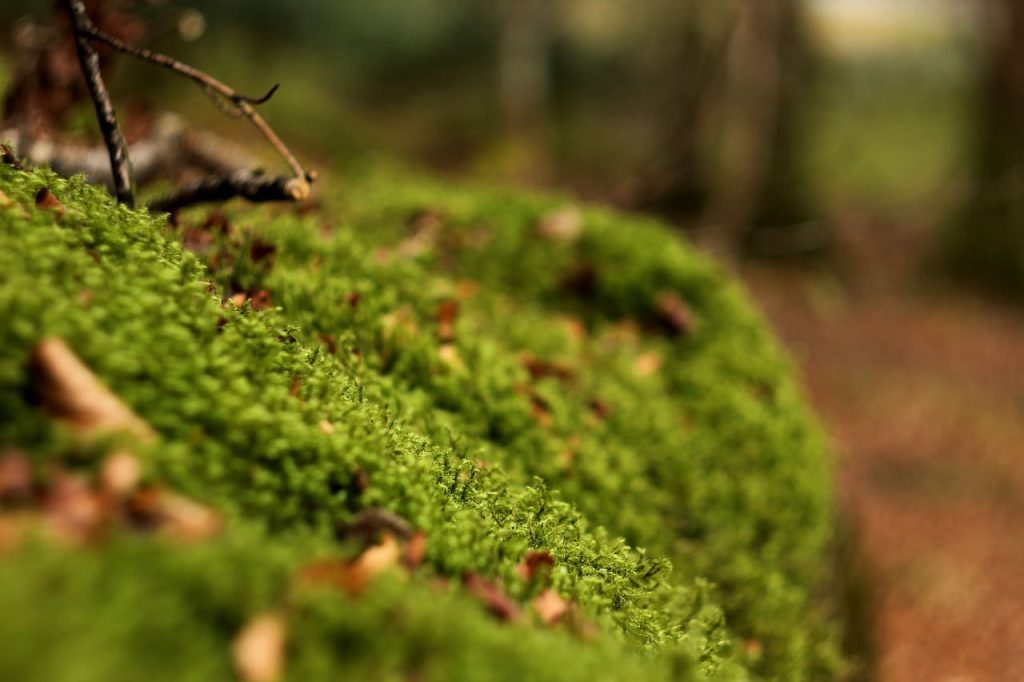
3. Pondweed
Pondweed scientific name is Potamogeton spp. and belongs to family Potamogetonaceae (pondweeds). They are perennials with underwater leaves that are scattered in the area of 6 feet that is rooted to the bottom. Pondweed species grow on the edges of ponds and lakes, up to about 8 feet of water and it is mostly submerged in water with floating leaves and only the flowers rising above the surface. These plants spread with the help of rhizomes (modified underground stems), winter buds, seeds, or fragmentation, however, that depends on the species.

Image Source: Plantnet
4. Red Sea Whip
Red Sea Whip scientific name is Herpolitha limax and has the ability to change color. The threats to these plants s include Fish, snails, sea urchins, crabs, and lobsters. These underwater plants grow very slowly and it will take many years to reach their full length. They are mainly found in the Atlantic Ocean and prefer to grow on rocky surfaces. It is one of the most important factors in the coral ecosystem as it houses quite a few different creatures. They are mostly known for their whip-like stems or tentacles.
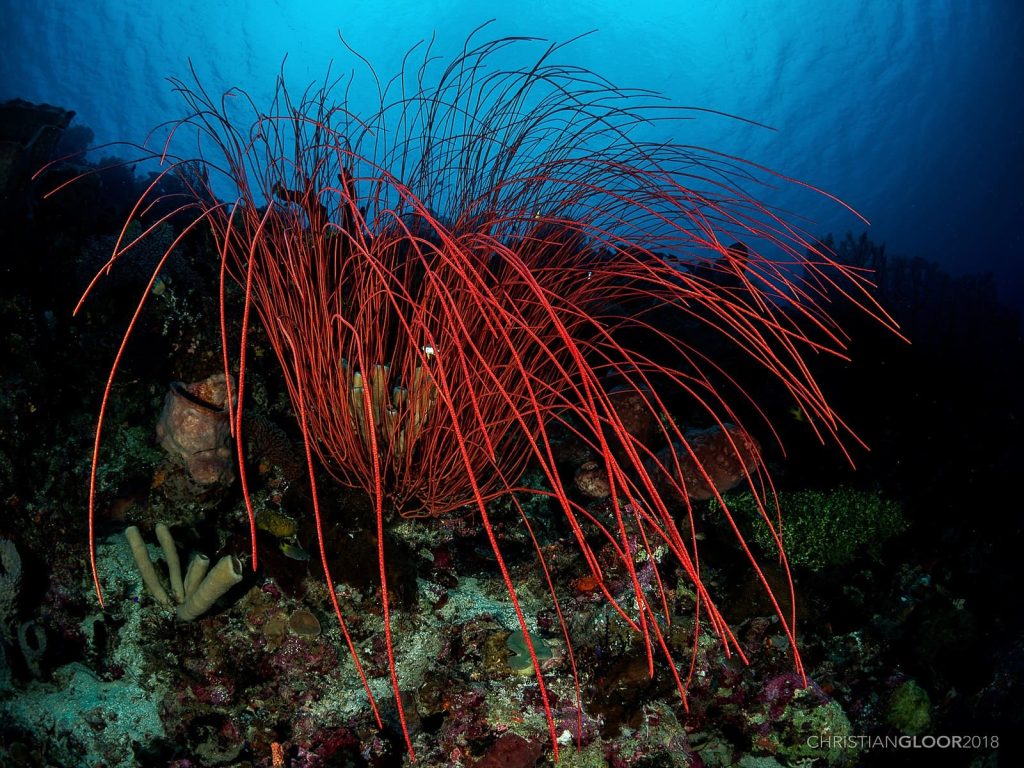
Image Source: Wikimedia
5. White-Plumed Anemone
The White-plumed anemone is one of the underwater plants that can grow to one meter tall along with lobed oral disc fringed and short fine tentacles. They mostly prefer to thrive on rocky shores, continental shelves, exposed rocky shores, kelp forests, and protected rocky shores. These plants are really abundant and seen in regions across Alaska to southern California. They can grow upto 1 m (40 in.) and crown diameter is upto 25 cm (10 in.)
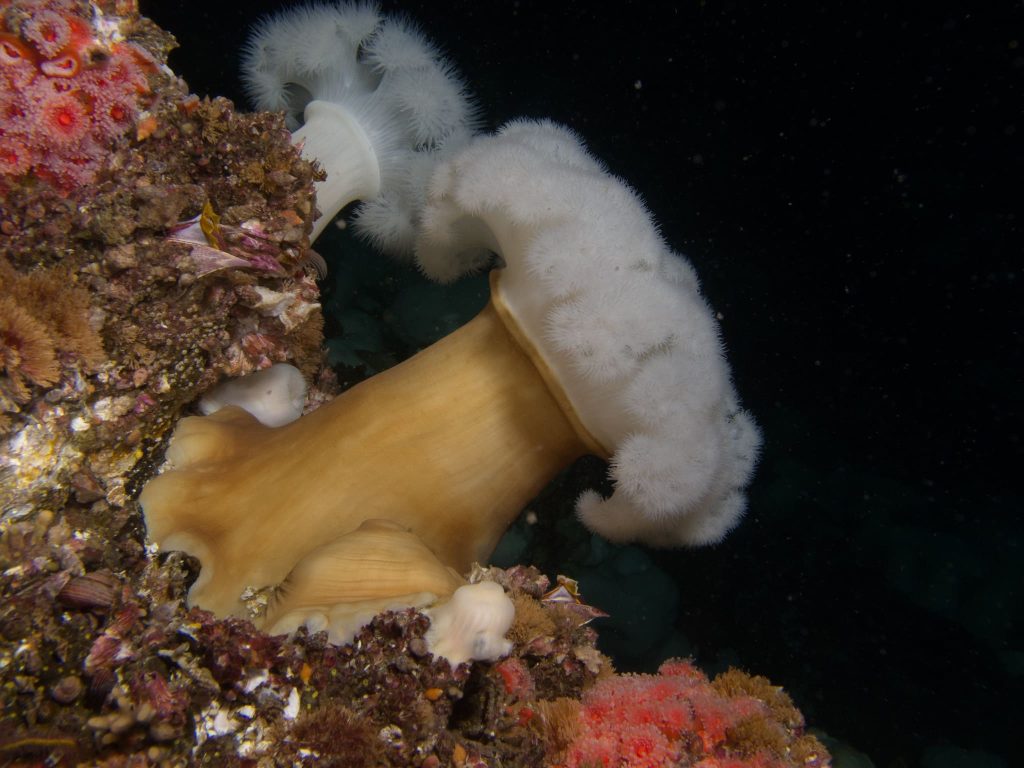
Image Source: Ed Bierman
6. Common Waterweed
Common Waterweed has slender, branching stems along with tiny and narrow leaves. The design of leaves are either straight or oval-shaped and grow in whorls of three along each stem. The predator of these plants is especially ducks muskrats and beavers. It is also known as Canadian waterweed and provides a habitat for fish, amphibians, and aquatic invertebrates. People often get confused with Common Waterweed with hydrilla or Brazilian waterweed. These plants can be distinguished with the help of leaves, which grow in whorls of three and do not have visible teeth.
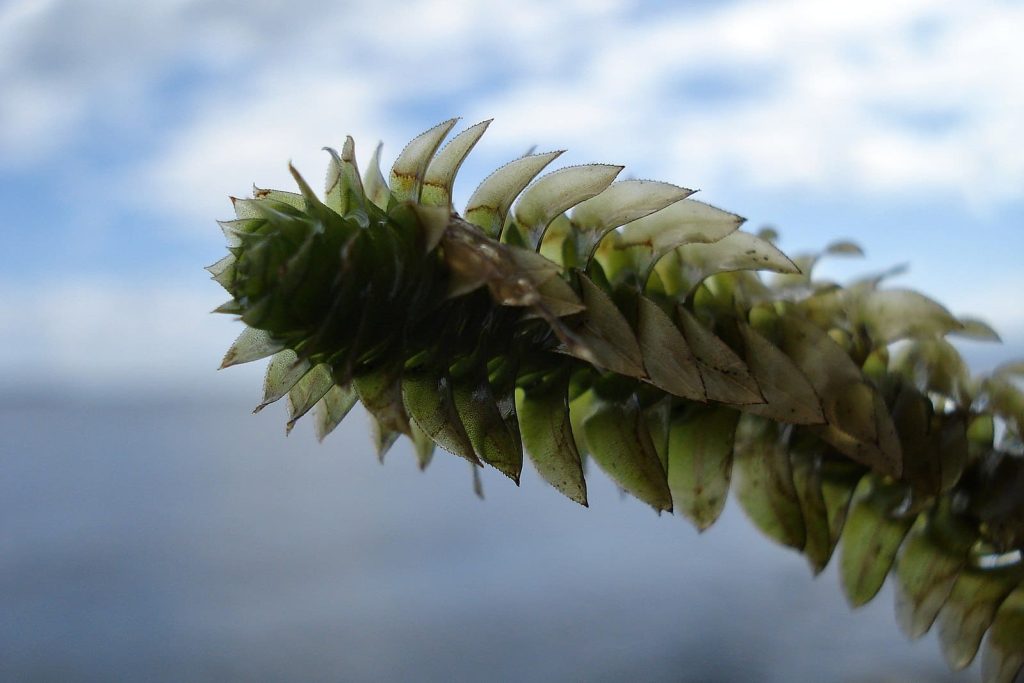
Image Source: Wikimedia
7. Bladderwort
Bladderwort are submerged free-floating plants and as of now,200 species can be seen across the world that can be angered between a few inches to several feet long. These plant species are rootless and have main stems from which lacy, often complex leaves grow. These plant species grow everywhere if naturals condition are met in wetlands.
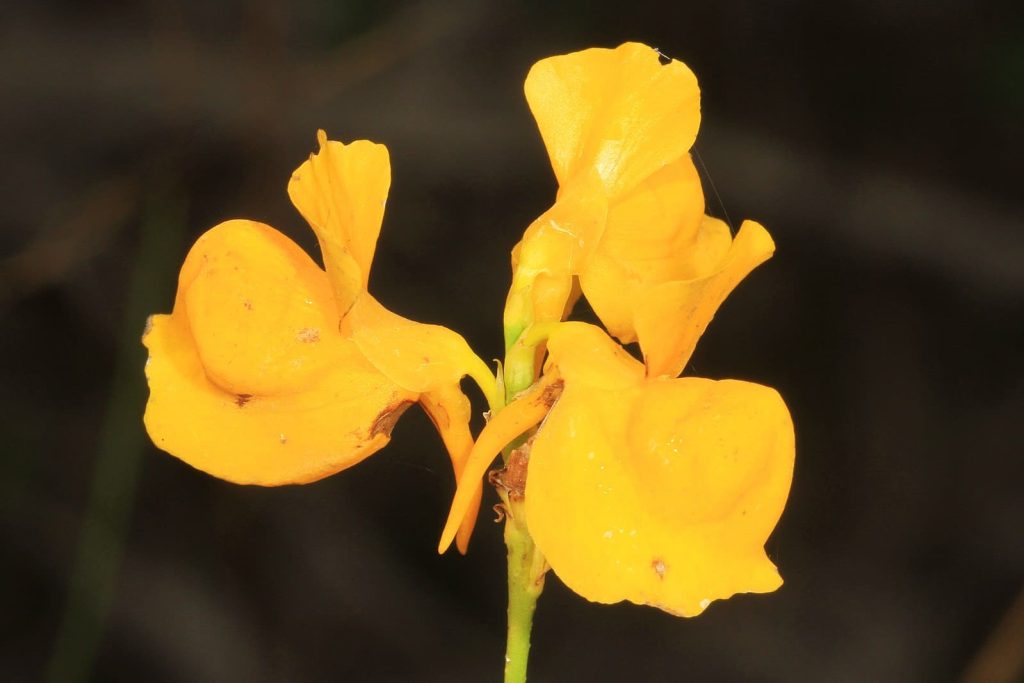
Image Source: Wikimedia
8. Elodea Canadensis
Elodea Canadensis is a perennial aquatic plant native to most of North America. The plant species grow upto 9.8 ft. (3 m) in length. The leaves can grow upto 0.67 in. (1.7 cm) long and 0.16 in. (0.4) wide. The plant is completely underwater, however, its small white or pale purple flowers float at the surface and are attached to the plant by delicate stalks. The fruit of the plant is an ovoid capsule, about 0.23 in. (0.58 cm) long containing several seeds that ripen underwater.

Image Source: Wikimedia
9. Eurasian Watermilfoil
Eurasian Watermilfoil is a submerged aquatic plant where leaves appear green while the stems are white to reddish. It has feather-like leaves where four leaves are arranged in a whorl around instem. The color of the flower is pink can spike up to four inches long and produces tiny yellow flowers. Both male and female flowers appear on the same plant. The plant can produce approximately 100 seeds per season, however, the species is more successful in reproducing via fragments.
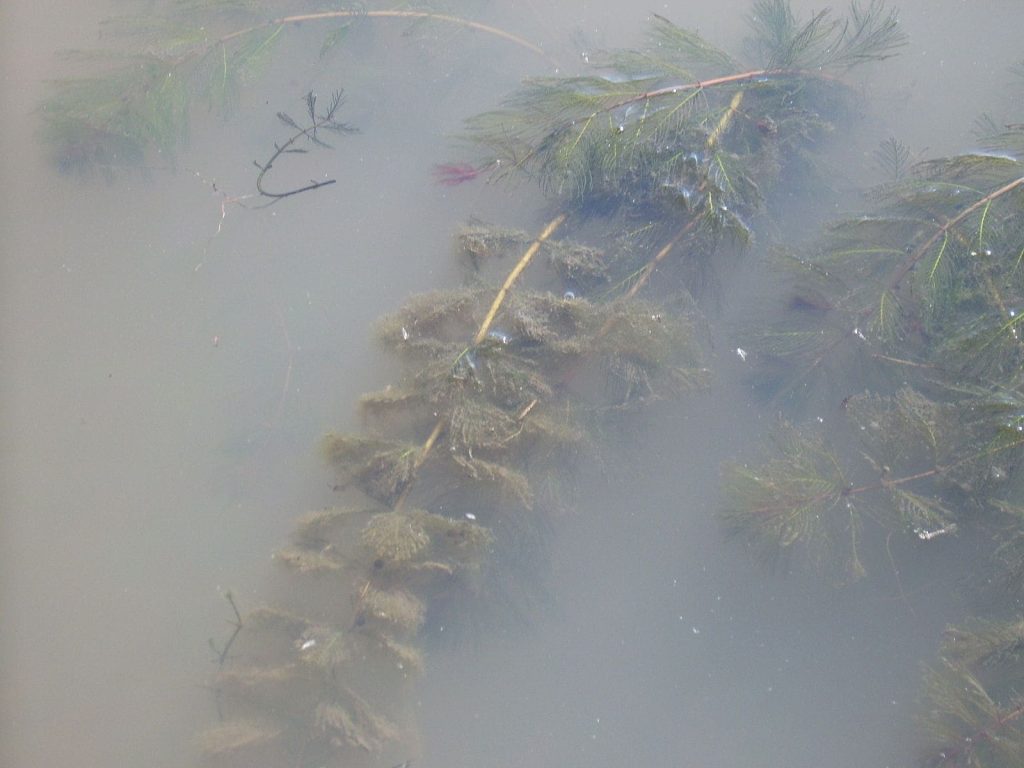
Image Source: Wikimedia
10. Coontail
Coontail is one of the underwater plants that can be found in the quiet waters of lakes, ponds, and slow streams. The fruits of plants are consumed by ducks and it is considered a good wildlife food. The submerged portion of the plant species provides habitat to many micro and macro invertebrates. These invertebrates are then used as food by fish and other wildlife species such as amphibians, reptiles, ducks, etc. Once these plants die, thier decomposition by bacteria and fungi provides food to many aquatic invertebrates.
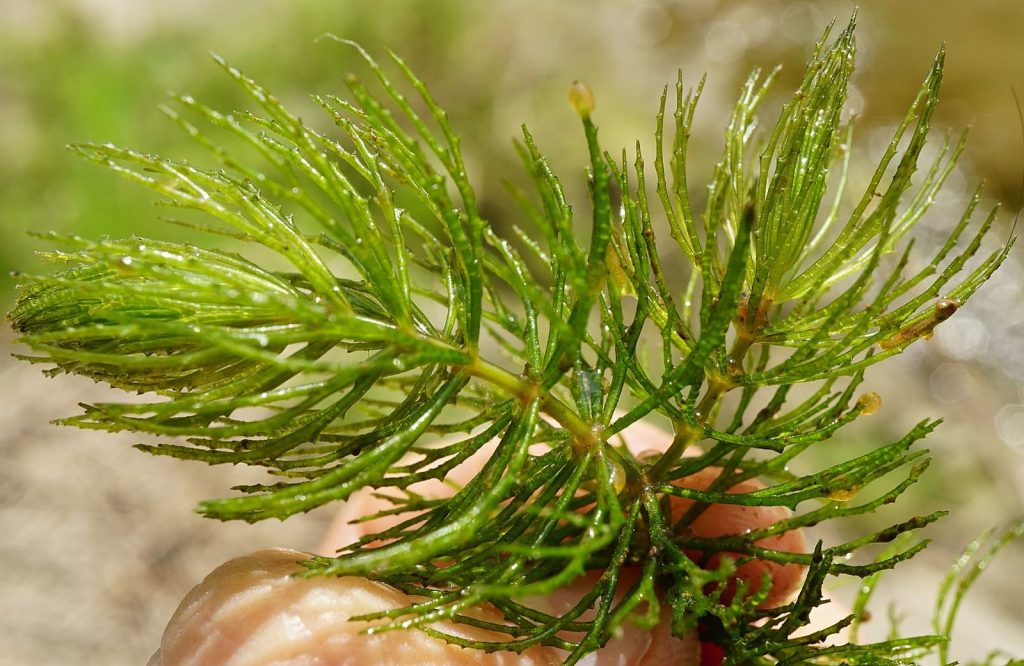
Image Source: Wikimedia
These are some of the types of underwater plants in the world. Kindly share and do post your comments.



